Nursing 'Bucket Gardens' - and Community Health
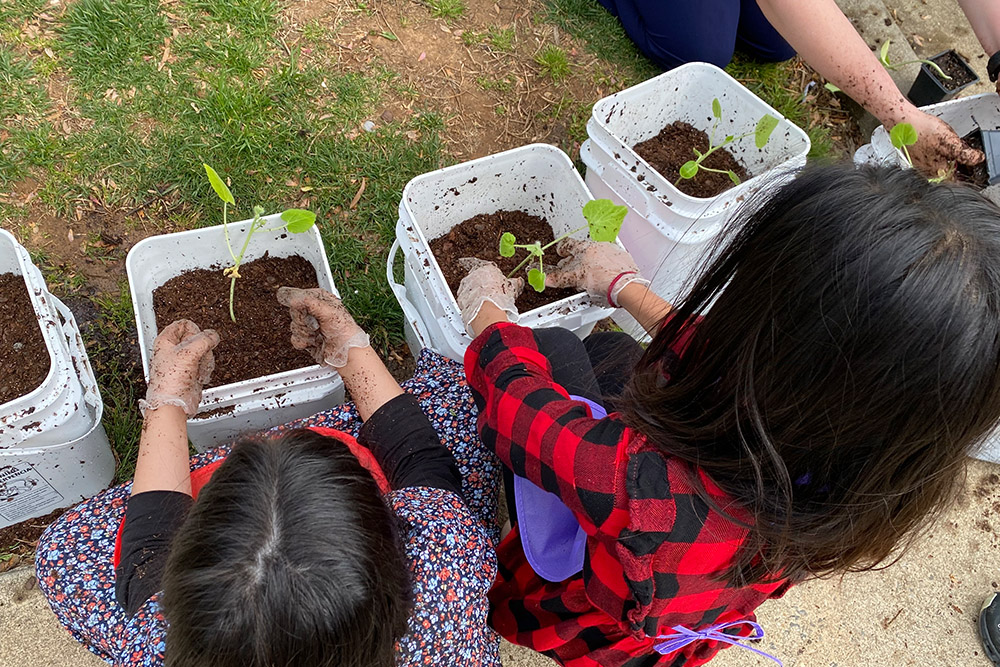
Friendship Court, the decades-old housing complex in the middle of downtown Charlottesville, was a food desert again.
The complex's old community garden—which had been both large and a boon to resident green thumbs with a gift and a hankering for cultivating their own fresh, homegrown produce—had been demolished to make way for new apartment buildings.
With space tight, and the nearest full-service grocery store more than a mile away (the definition of a food desert), nursing students on their community health clinical rotation got to thinking: what's a smaller-scale path to fresh, nutritious vegetables?
Enter the "bucket garden."
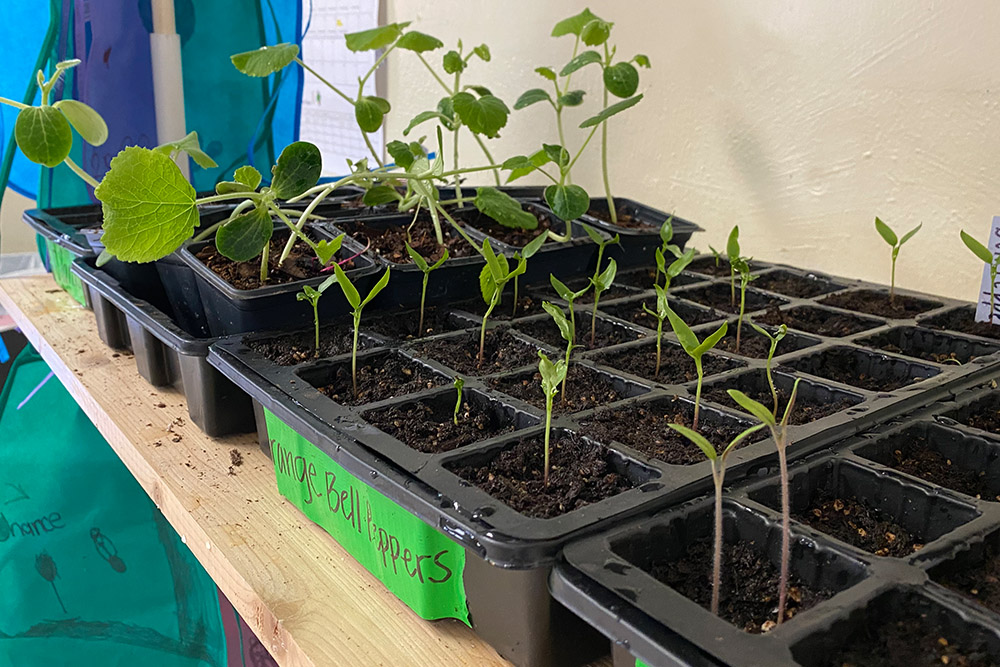
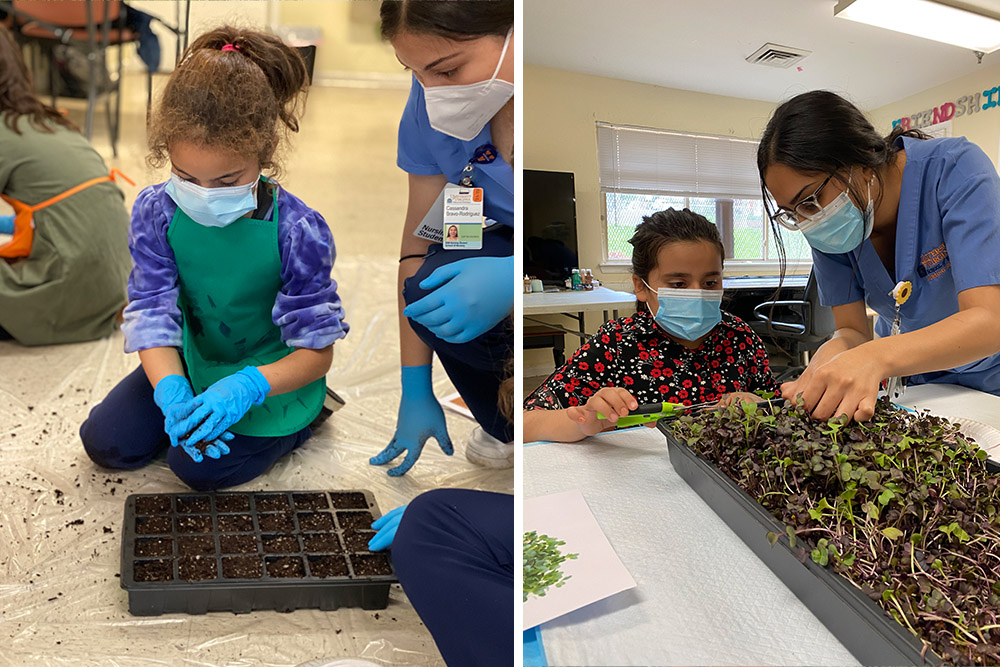
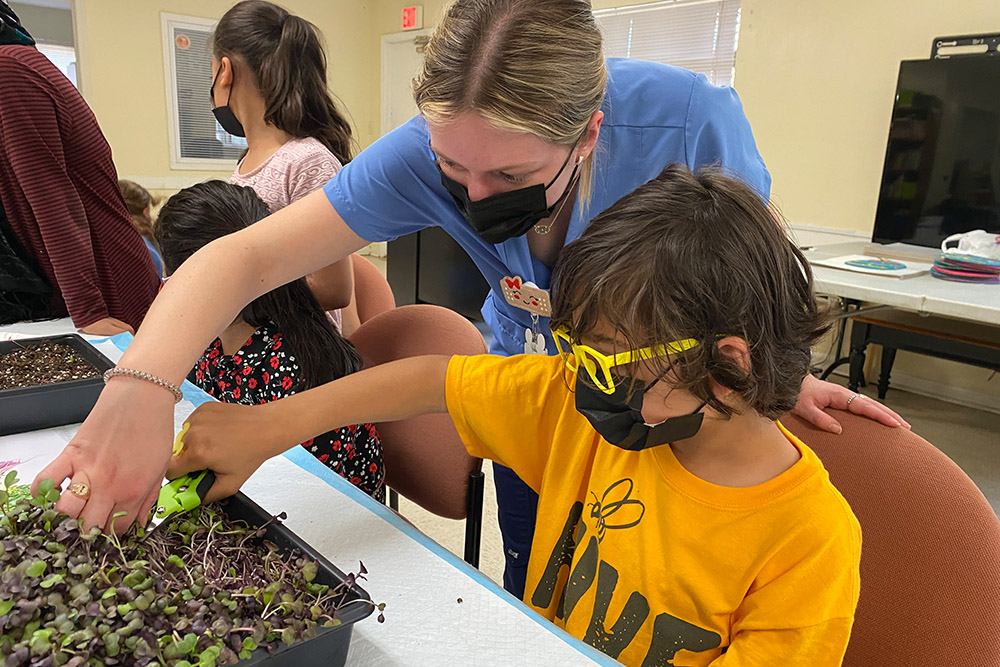
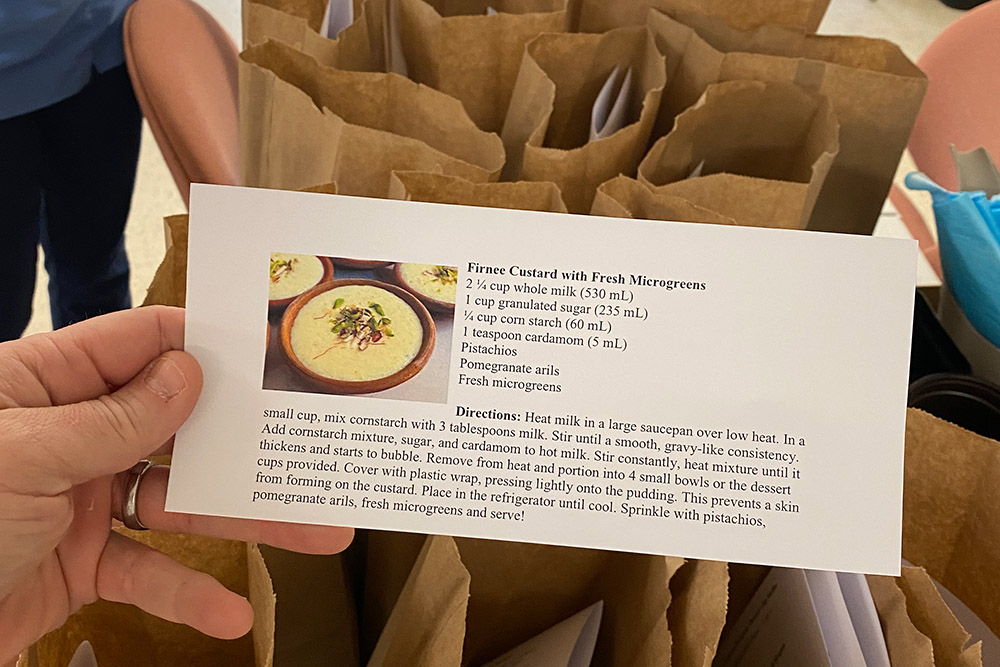
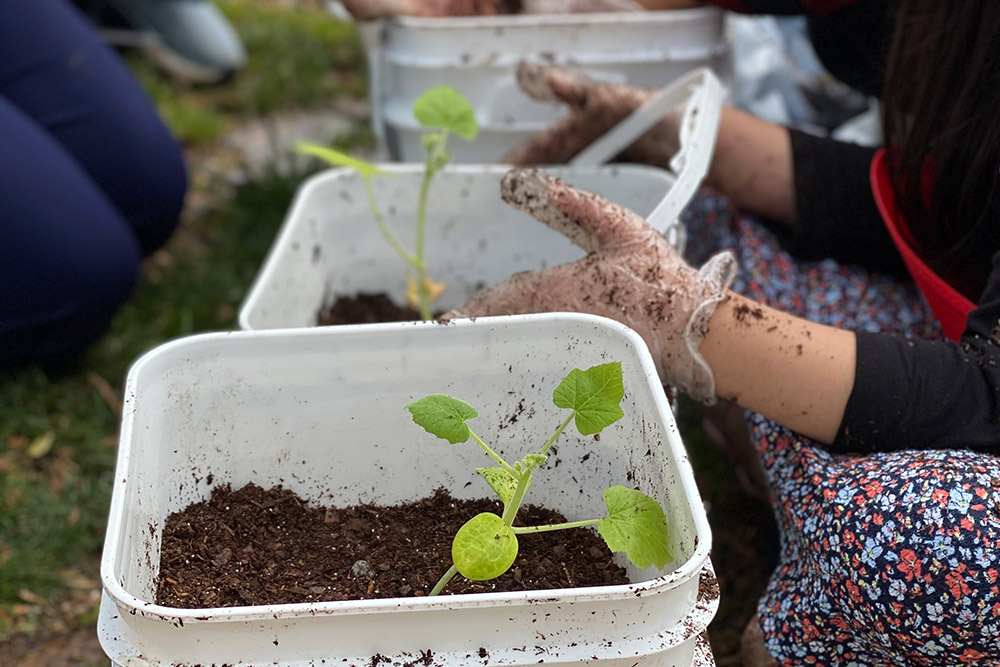
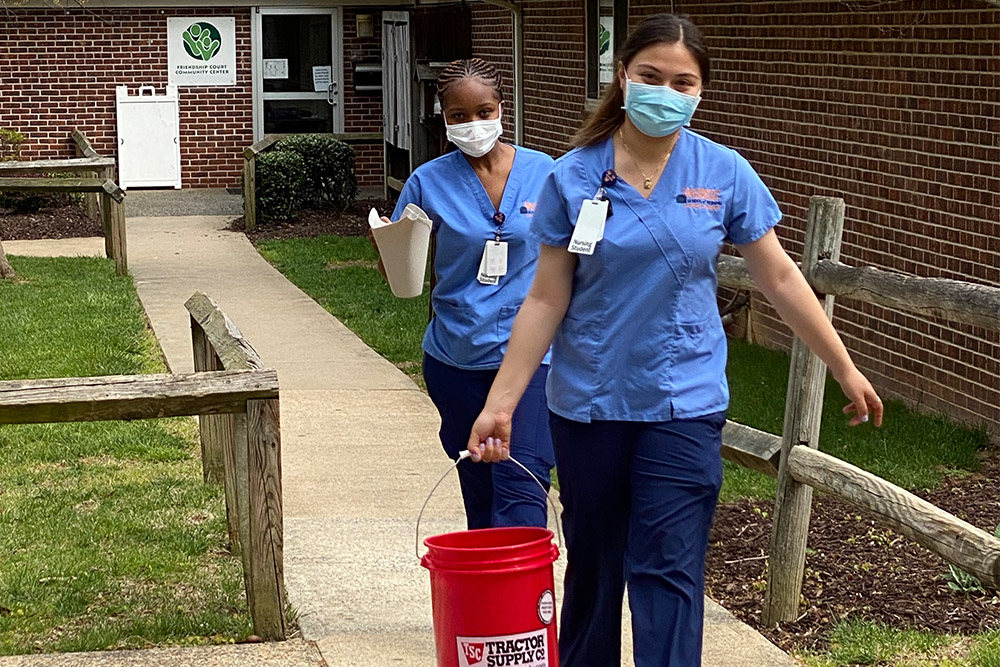
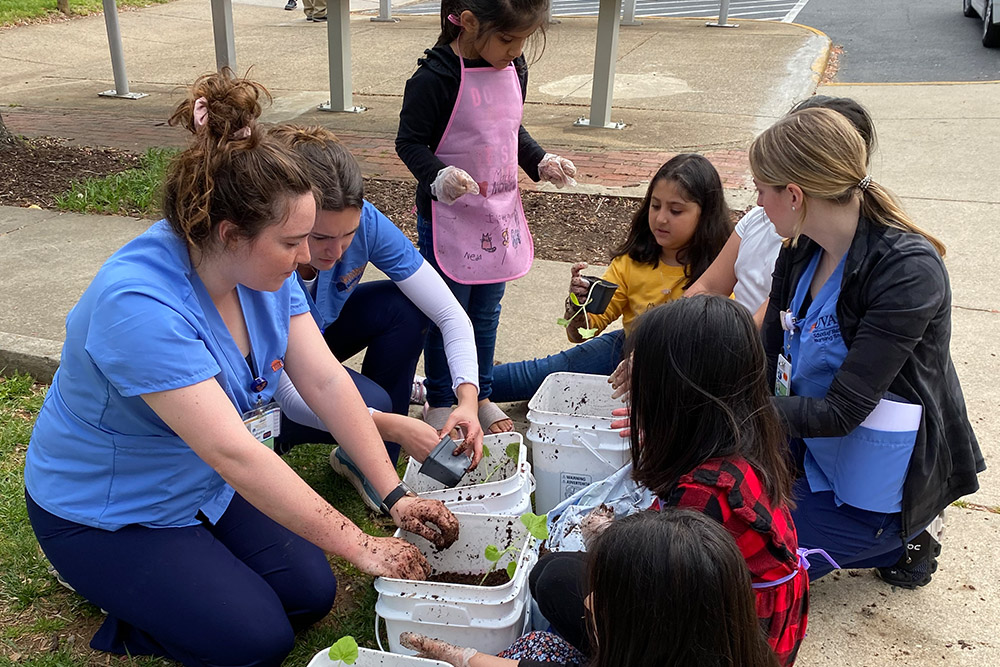
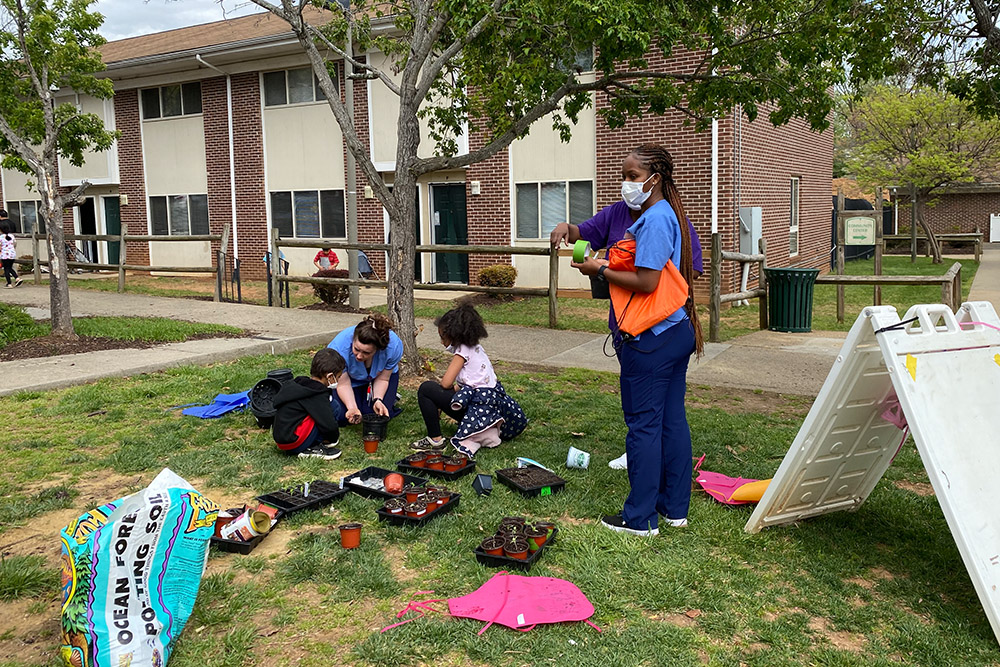
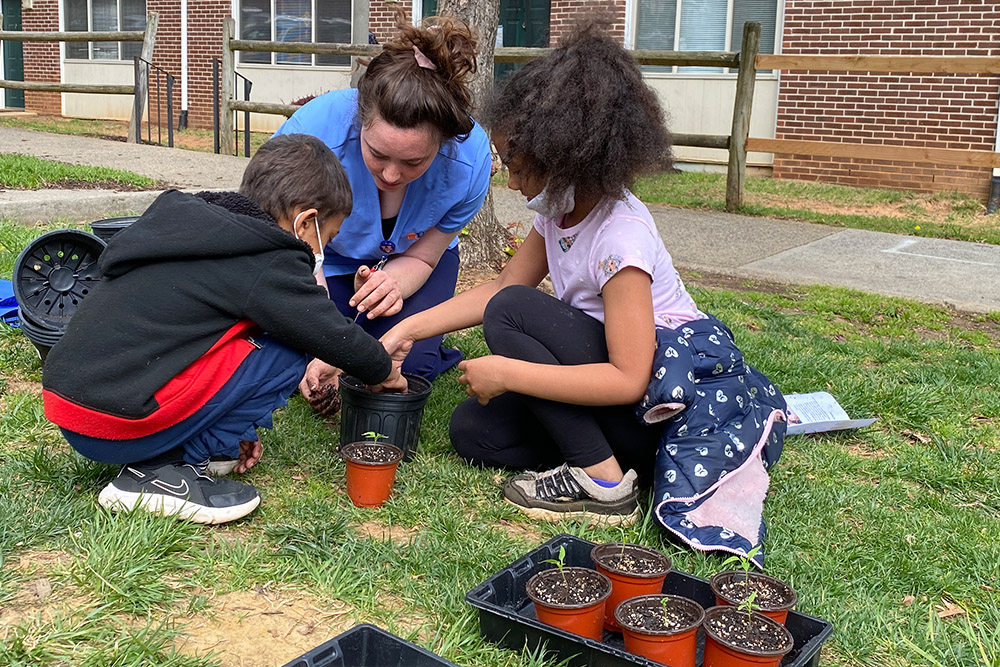
With their clinical instructor, Ashley Apple, an assistant professor and a pediatric nurse practitioner, the students designed and organized a six-week garden project focused on nutrition and cultivation with donated supplies, seeds, dirt, and a lot of small helping hands, many of whom belonged to recently resettled immigrant children from Afghanistan.
The nursing students taught lessons about nutrition, plant growth, and food production to the kids, who were eager to choose, plant, tend, and measure their seeds' early progress in the complex's community room. With Apple’s woodworking know-how, the group built a “seedling station," complete with grow-lights and a warming mat, to nurture tender seedlings during the late winter months. Some weeks later, once the weather had warmed and the plants were bigger and hearty enough for the world outside, the nursing students and kids transplanted their crops into recycled icing buckets (thanks to donations from the local Wegman’s and Lowe's ), ready for the warmth of natural sunshine and fresh air.
By mid-April, the gardeners had harvested their first crop of radish and beet microgreens. Because the harvest came in the middle of Ramadan (and a goodly number of the kids involved were Muslim), the students measured the ingredients needed to make firnee, a simple Afghan custard, with the harvested microgreens as the topping. Recipe kits were sent home with the kids to share with their parents after sundown.
By early April, once the rest of the plants had been replanted into buckets of soil, the kids took their plants home to grow their vegetables on their sunny home porches and patios.
Apple estimated there were more than two dozen tomato plants, 15 buckets of squash plants, 20 buckets of eggplants, 20 buckets of orange bell pepper plants, and a smattering of both dill and mint plants.
BIG thanks to our community of nursing student growers who, with Apple and the resident kids, nurtured this project along:
- Cassandra Bravo-Rodriguez
- Jenna Daniels
- Grace Gambrah
- Diana Geary
- Knaide Green
- Riannon Miller
- Annie Weeden
- Zoya Zahid
###
